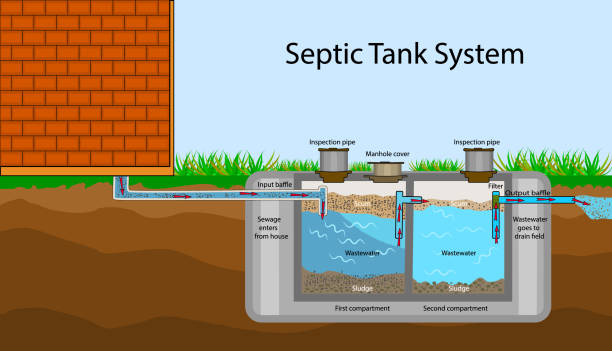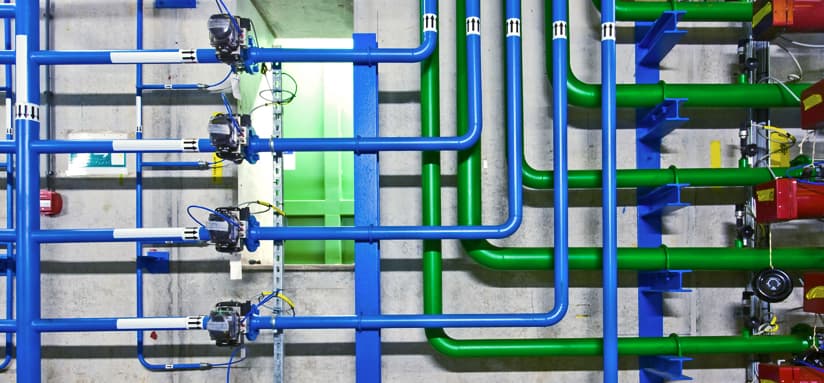What The Design of Your Home's Plumbing System Matters
What The Design of Your Home's Plumbing System Matters
Blog Article
On this page below you'll find a good deal of incredibly good data related to Understanding Your Home's Plumbing Anatomy.

Recognizing exactly how your home's plumbing system functions is important for every single homeowner. From delivering clean water for drinking, food preparation, and bathing to safely removing wastewater, a well-kept pipes system is critical for your family's health and wellness and convenience. In this comprehensive guide, we'll explore the complex network that composes your home's plumbing and offer ideas on upkeep, upgrades, and handling common problems.
Introduction
Your home's plumbing system is greater than simply a network of pipelines; it's an intricate system that guarantees you have accessibility to clean water and effective wastewater removal. Knowing its components and exactly how they collaborate can assist you stop expensive repair services and ensure every little thing runs efficiently.
Standard Elements of a Pipes System
Pipes and Tubes
At the heart of your pipes system are the pipelines and tubes that bring water throughout your home. These can be made of various materials such as copper, PVC, or PEX, each with its benefits in regards to sturdiness and cost-effectiveness.
Components: Sinks, Toilets, Showers, and so on.
Components like sinks, bathrooms, showers, and bath tubs are where water is made use of in your house. Comprehending how these fixtures attach to the pipes system assists in detecting troubles and planning upgrades.
Shutoffs and Shut-off Factors
Valves regulate the circulation of water in your plumbing system. Shut-off valves are vital throughout emergencies or when you require to make fixings, enabling you to isolate parts of the system without disrupting water circulation to the entire house.
Water Supply System
Key Water Line
The major water line attaches your home to the community supply of water or a private well. It's where water enters your home and is distributed to different fixtures.
Water Meter and Pressure Regulatory Authority
The water meter steps your water usage, while a stress regulator makes certain that water streams at a safe pressure throughout your home's plumbing system, preventing damages to pipes and components.
Cold Water vs. Warm water Lines
Comprehending the difference in between cold water lines, which supply water straight from the major, and warm water lines, which carry heated water from the hot water heater, assists in fixing and planning for upgrades.
Drainage System
Drain Pipes Pipes and Traps
Drain pipelines bring wastewater away from sinks, showers, and bathrooms to the sewage system or septic tank. Traps prevent sewage system gases from entering your home and likewise trap particles that can trigger clogs.
Air flow Pipes
Air flow pipelines enable air into the drain system, preventing suction that might slow down drainage and trigger catches to empty. Correct ventilation is necessary for maintaining the integrity of your pipes system.
Value of Proper Drain
Making certain appropriate water drainage prevents backups and water damages. Consistently cleansing drains and preserving catches can avoid expensive repairs and prolong the life of your pipes system.
Water Furnace
Types of Hot Water Heater
Hot water heater can be tankless or typical tank-style. Tankless heaters warm water as needed, while storage tanks save warmed water for immediate usage.
How Water Heaters Link to the Plumbing System
Comprehending how hot water heater attach to both the cold water supply and hot water circulation lines helps in diagnosing problems like inadequate warm water or leaks.
Maintenance Tips for Water Heaters
On a regular basis flushing your hot water heater to get rid of sediment, inspecting the temperature level settings, and checking for leakages can prolong its lifespan and enhance power effectiveness.
Typical Plumbing Concerns
Leaks and Their Reasons
Leaks can happen as a result of aging pipes, loosened installations, or high water pressure. Attending to leaks immediately stops water damage and mold and mildew development.
Obstructions and Clogs
Obstructions in drains pipes and bathrooms are usually caused by flushing non-flushable products or a build-up of grease and hair. Making use of drain screens and being mindful of what decreases your drains pipes can avoid blockages.
Indicators of Pipes Problems to Watch For
Low water stress, slow-moving drains pipes, foul odors, or abnormally high water bills are signs of prospective pipes issues that ought to be attended to without delay.
Pipes Maintenance Tips
Routine Assessments and Checks
Set up yearly pipes assessments to capture problems early. Search for signs of leakages, deterioration, or mineral build-up in taps and showerheads.
Do It Yourself Upkeep Tasks
Basic jobs like cleaning faucet aerators, checking for toilet leaks using color tablet computers, or protecting exposed pipelines in cool environments can avoid significant plumbing concerns.
When to Call a Specialist Plumbing Professional
Know when a pipes problem needs expert competence. Trying complex fixings without correct understanding can lead to more damage and greater repair service costs.
Updating Your Pipes System
Factors for Updating
Updating to water-efficient fixtures or changing old pipes can improve water top quality, reduce water costs, and boost the worth of your home.
Modern Plumbing Technologies and Their Benefits
Discover modern technologies like wise leak detectors, water-saving toilets, and energy-efficient water heaters that can save cash and lower ecological impact.
Cost Factors To Consider and ROI
Determine the in advance costs versus lasting financial savings when thinking about pipes upgrades. Lots of upgrades pay for themselves via minimized utility bills and less repairs.
Ecological Impact and Preservation
Water-Saving Components and Home Appliances
Setting up low-flow faucets, showerheads, and commodes can significantly lower water use without sacrificing efficiency.
Tips for Decreasing Water Usage
Easy behaviors like dealing with leaks immediately, taking shorter showers, and running full lots of washing and dishes can save water and reduced your utility costs.
Eco-Friendly Pipes Options
Consider lasting pipes materials like bamboo for floor covering, which is durable and green, or recycled glass for countertops.
Emergency situation Preparedness
Actions to Take During a Pipes Emergency situation
Know where your shut-off valves lie and how to turn off the supply of water in case of a ruptured pipe or major leakage.
Significance of Having Emergency Situation Contacts Useful
Keep get in touch with details for local plumbing technicians or emergency situation services easily offered for fast feedback throughout a pipes dilemma.
Do It Yourself Emergency Fixes (When Appropriate).
Momentary repairs like utilizing duct tape to patch a dripping pipe or placing a bucket under a dripping tap can minimize damages till a specialist plumbing professional shows up.
Verdict.
Understanding the anatomy of your home's pipes system equips you to keep it efficiently, saving money and time on fixings. By adhering to normal upkeep routines and staying notified concerning modern plumbing innovations, you can ensure your plumbing system runs efficiently for many years to find.
HOW YOUR PLUMBING SYSTEM WORKS
Which Pipes Do What?
Blue lines = fresh water supply entering the building
Red lines = hot water supply entering the building
Grey lines = pipes carrying waste away from the building and venting pipes carrying gases away from the building (through the roof)
YOUR MAIN PLUMBING SYSTEMS
There are two main plumbing systems that support your home s basic plumbing needs one that brings clean water into your home, and one that sends dirty water away from your home. Connected to the toilet, bath, shower, and other faucets in your home, these two systems keep your water flowing in the right directions.
ACCESSING FRESH WATER
Fresh and clean water is brought into your home through the main water supply line . Filtered through one pipe, this water is pressured to flow into the various fixtures in your home at any given time.
This water can be sourced from a well located on your property, a pond or river (mostly cottages), or, as in most cases, from the city s municipal water treatment centre. However, it is important to note that water that is untreated, such as the water siphoned from ponds or rivers, may not be safe to drink. Personal water supplies always need to be treated for hardness and contaminants before consumed.
MUNICIPAL WATER SUPPLIES
Improve taste and odour
Remove sediment
Eliminate hardness
Reduce chlorine
COLD WATER SUPPLY VS. HOT WATER SUPPLY
Cold water flows into your home or building through the service line, which then distributes hot or cold water to your fixtures. This line is most commonly run through a central column that runs floor to floor. Hot water runs in short and straight pipes as the longer the pipeline, the more heat that will be lost in the transfer. Having shorter pipes also allows residents to access hot water more quickly.
WASTE WATER SYSTEM
Your wastewater system is divided into two parts pipes that send wastewater away from your home and venting pipes that send sewer gas away from your home. Sewage water travels through pipes that flush the water and waste towards local sewers that are operated and managed by your city or town. Most sewer systems rely on gravity to move the wastewater to where it needs to go.
The further away from your toilet or sink, the larger wastewater pipes become. This allows for waste to be disposed of from various parts of your home or business at once without pipe blockages. The angle and flow of these pipes are also essential for keeping your waste pipes clear of build up.
https://harrisplumbing.ca/how-your-home-plumbing-system-works/

HOW YOUR PLUMBING SYSTEM WORKS
Which Pipes Do What?
YOUR MAIN PLUMBING SYSTEMS
There are two main plumbing systems that support your home s basic plumbing needs one that brings clean water into your home, and one that sends dirty water away from your home. Connected to the toilet, bath, shower, and other faucets in your home, these two systems keep your water flowing in the right directions.
ACCESSING FRESH WATER
Fresh and clean water is brought into your home through the main water supply line . Filtered through one pipe, this water is pressured to flow into the various fixtures in your home at any given time.
This water can be sourced from a well located on your property, a pond or river (mostly cottages), or, as in most cases, from the city s municipal water treatment centre. However, it is important to note that water that is untreated, such as the water siphoned from ponds or rivers, may not be safe to drink. Personal water supplies always need to be treated for hardness and contaminants before consumed.
MUNICIPAL WATER SUPPLIES
COLD WATER SUPPLY VS. HOT WATER SUPPLY
Cold water flows into your home or building through the service line, which then distributes hot or cold water to your fixtures. This line is most commonly run through a central column that runs floor to floor. Hot water runs in short and straight pipes as the longer the pipeline, the more heat that will be lost in the transfer. Having shorter pipes also allows residents to access hot water more quickly.
WASTE WATER SYSTEM
Your wastewater system is divided into two parts pipes that send wastewater away from your home and venting pipes that send sewer gas away from your home. Sewage water travels through pipes that flush the water and waste towards local sewers that are operated and managed by your city or town. Most sewer systems rely on gravity to move the wastewater to where it needs to go.
The further away from your toilet or sink, the larger wastewater pipes become. This allows for waste to be disposed of from various parts of your home or business at once without pipe blockages. The angle and flow of these pipes are also essential for keeping your waste pipes clear of build up.
https://harrisplumbing.ca/how-your-home-plumbing-system-works/
We were made aware of that editorial on Anatomy of a House: Understanding the Components from a buddy on our other site. I beg you set aside a second to distribute this write-up if you appreciated it. Thank you for your time invested reading it.
Get Started Report this page